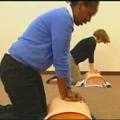Author Interviews, Emergency Care, Heart Disease, Social Issues / 28.06.2020
Social Disparities in Pre-Hospital Cardiac Arrest Outcomes
MedicalResearch.com Interview with:
Sriman Gaddam
The University of Texas at Austin
Austin, TX 78705
MedicalResearch.com: What is the background for this study?
Response: The quality of care that patients receive from the US healthcare system continues to be influenced by socioeconomic status (SES). Given that cardiac arrest is one of the most common causes of death in the US and that the prehospital setting has an especially high mortality for cardiac arrest, we wanted to determine if the socioeconomic disparities found in the overall US healthcare system continued into the prehospital cardiac arrest setting.
MedicalResearch.com: What are the main findings?
Response: We found that socioeconomic disparities were present in the prehospital cardiac arrest setting. As the SES of a patient declines, so does the patient's likelihood of achieving return of spontaneous circulation (ROSC). Between the most and least wealthy patients, there was nearly a 13% difference in the probability of achieving ROSC. However, we recognized that not all patients who achieve ROSC are equal as patients can have significantly different neurological functioning depending on the length of time spent in cardiac arrest. Consequently, this paper analyzed cardiac arrest outcomes not only through the occurrence of ROSC but also through the duration of time spent in cardiac arrest. In line with the socioeconomic disparities found in ROSC occurrence, it was found that as a patient's SES declines, the duration of time spent in cardiac arrest before ROSC is achieved increases. This indicates that patients with a low SES are both more likely to not achieve ROSC and if ROSC is achieved more likely to have neurological impairment due to longer time spent in cardiac arrest compared to patients with a high SES.
(more…)








